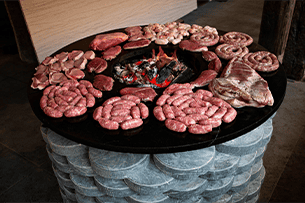Hi Everybody,
I'm trying to decide on a wood stove for my home expansion project. It will need to do the following:
- Aaron

 www.vermontwoodstove.com
(broken link removed)
www.vermontwoodstove.com
(broken link removed)
I'm trying to decide on a wood stove for my home expansion project. It will need to do the following:
- Heat a minimum of 1600 square feet (800 downstairs, 800 upstairs, square floorplan) - stove will be centrally located
- Heat a maximum of 2200 square feet if I add a 600 square foot in-law off the lower level later on down the road
- Serve as our primary means of cooking in the winter, cook-top and oven
- Preferably heat our hot water during winter months
- Is it worth it to get the version that's wrapped in soapstone? I love that it'll slowly release heat through the night but am worried that cooking on soapstone could have problems (staining, cracking, etc.).
- If I hook up the water heater, it may lose 20% of its heating capacity for the house. At 65,000 BTU's (effectively 52,000 with the water heater attachment), will it still heat the house adequately?
- Are there other stoves I should be considering?
- Aaron

Vermont Woodstove | The Vermont Bun Baker Wood Cook-Stove
There is nothing like a Vermont Wood Stove made of Soapstone. Our Masonry Heaters & Wood Fired Ovens have quickly become America’s most popular way to heat YOUR home.
 www.vermontwoodstove.com
www.vermontwoodstove.com


![[Hearth.com] Soapstone and Water Heating Considerations on Buying a Wood Stove [Hearth.com] Soapstone and Water Heating Considerations on Buying a Wood Stove](https://www.hearth.com/talk/data/attachments/256/256511-5608d431bfd509a0c6db1e30fb97e914.jpg?hash=RUxs-Yvm_V)